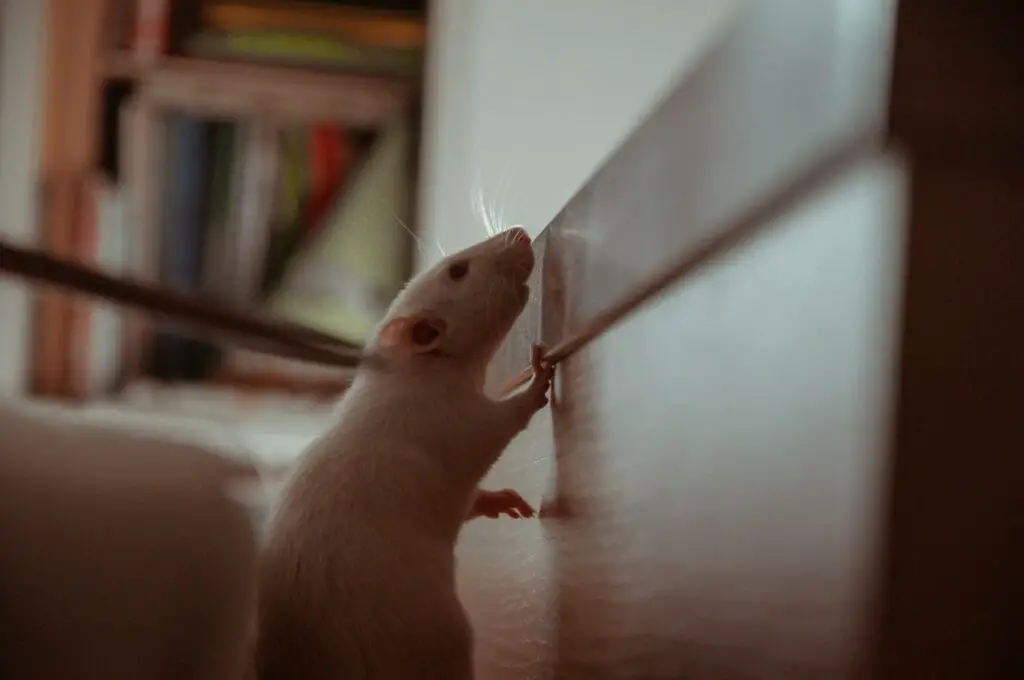Eliminating mice’s urine odor requires a multi-faceted approach, addressing both the cleaning of existing stains and the prevention of future infestations. Discover practical solutions for a fresher, healthier home environment.
Cleaning Solutions for Mouse Urine Odor
To effectively neutralize the odor of mice urine, a multifaceted approach using various cleaning supplies is essential. It’s important to choose the right products that will not only mask the smell but also break down the urine molecules, ensuring a fresh and hygienic environment.
Natural Cleaning Agents
For those concerned about the health risks associated with harsh chemicals, natural remedies offer a safer alternative to combat mice urine odors. These methods can effectively mask and eliminate smells while being pet-friendly and reducing the chance of contracting diseases like hantavirus pulmonary syndrome.
Baking Soda – A Versatile Deodorizer
When dealing with the odor of mice urine, baking soda is a natural choice for many homeowners. Its ability to absorb and neutralize smells makes it an excellent option for freshening up affected areas. Simply sprinkle baking soda over the stained area and let it sit to absorb the urine odors. After a sufficient amount of time, vacuum up the baking soda, which will have collected much of the smell along with it.
Vinegar – An Acidic Solution for Neutralizing Odor
Vinegar’s acidic nature makes it ideal for removing the smell of mouse urine. To use, mix a solution of 9 parts water to 1 part vinegar in a spray bottle and apply generously to the affected areas. The vinegar will work to neutralize the lingering odor while also disinfecting the surface. It is crucial to remember, however, that mouse infestation can lead to health issues like lymphocytic choriomeningitis, as stated by the Centers for Disease Control and Prevention. Therefore, while cleaning, always wear protective gear and ensure proper rodent control to prevent future health hazards.
Essential Oils as a Natural Scent Solution
Essential oils are a popular choice for naturally addressing the odor of mouse feces and urine. By adding a few drops of oils like eucalyptus or tea tree to a spray bottle filled with water, you can create a pleasant-smelling solution that can be sprayed around the home for a fresh scent. Allow the solution to settle for about 5 minutes before wiping the area clean. Not only will this help mask odors, but some essential oils also have antimicrobial properties that can assist in rodent control, as recognized by the Centers for Disease Control and Prevention.
Charcoal and Coffee Grounds
Activated charcoal is renowned for its ability to absorb odors, making it an excellent choice for addressing mice urine smells. Place small bowls of charcoal in affected areas, and let its porous nature trap the unpleasant scent. This method is safe and non-toxic, ensuring no harm to pets or children. For a fresh scent, coffee grounds can also be used. Their strong aroma overpowers the urine odor while adding a pleasant coffee scent to the room. It is important to replace the charcoal and coffee grounds regularly to maintain their effectiveness. Over time, they will become saturated with the urine odor and lose their deodorizing capabilities. Check these natural odor absorbers every few days, and refresh them as needed to keep the area smelling clean and fresh.

The Use of Ammonia With Caution
Ammonia can be used to clean the affected areas, but it must be approached with caution due to its strong odor and potential to irritate the skin and respiratory system. Dilute the ammonia with water in a 1:1 ratio and apply it to hard surfaces where mice urine is present. The solution can help neutralize and remove the lingering smell. However, never mix ammonia with bleach or other cleaners, as this can create toxic fumes. Always ventilate the area well when using ammonia, and consider wearing protective gloves and a mask. After treating the area, rinse thoroughly with water to ensure no residue remains that could harm pets or family members.
Commercial Products for Odor Elimination
For persistent odors, commercial products designed to neutralize the odor can be more effective. These products contain specialized ingredients that target and break down the odor molecules, leaving the air fresh and clean.
Enzymatic Cleaners – Breaking Down Urine Residues
Enzymatic cleaners are a powerful tool in the cleaning process for mouse urine odor. These cleaners contain enzymes that break down the urine residues at the molecular level, eliminating the source of the smell rather than just covering it up. First, use paper towels to blot up as much of the mice’s urine as possible. Then, apply the enzymatic cleaner to the area and let it sit for at least 10 minutes. Afterward, clean the affected surface thoroughly and wash your hands to minimize health risks.
Odor Absorbers – Keeping the Air Fresh
Odor absorbers work by trapping and neutralizing odors from the air. These can range from activated charcoal to specially formulated gels and are particularly useful for lingering odor that persists even after thorough cleaning. When using these products, it’s imperative to continue identifying mouse urine and address the root cause of the issue, which is often an ongoing mouse infestation. Proper rodent control and cleaning, as recommended by the Centers for Disease Control and Prevention, are essential for maintaining a healthy living space.
Addressing Different Surfaces
Different surfaces require specific cleaning approaches to effectively clean mouse urine and eliminate any remaining odor. Fresh air, the use of a steam cleaner, and a properly diluted bleach solution can all play a role in restoring cleanliness to various surfaces within a home.
Removing Mouse Urine Smell from Hard Surfaces
Hard surfaces can be easier to clean when dealing with mice urine. To start, mix one part bleach with nine parts water to create a bleach solution that can disinfect and clean the affected area. Use gloves and ensure the area is well-ventilated to safeguard against any potential fumes. Once the solution is prepared, apply it to the stained area, scrub thoroughly, and rinse with water. The bleach will not only sanitize the surface but also help in reducing any lingering odor, leaving the area fresh and clean.
Techniques for Soft Surfaces
Soft surfaces like carpets and upholstery require a gentle yet effective approach to clean mouse urine. It’s important to treat these areas promptly to prevent the urine from setting and causing more persistent odors.
Carpet and Upholstery Treatments
Begin by blotting the stained area with a damp cloth to remove as much urine as possible. Then, apply a bleach solution, being careful to mix one part bleach with nine parts water to avoid damaging the fabric. Test a small inconspicuous area first to ensure colorfastness. Once the solution is applied, let it sit briefly, then blot again with a damp cloth to remove the cleaning agent and any remaining urine residue. This process may need to be repeated to fully eliminate the odor.
Effectiveness of Steam Cleaning
Steam cleaning is another effective method for treating soft surfaces. The high temperature of the steam not only helps to dissolve and lift the urine but also sanitizes the fabric, reducing the risk of lingering odors and bacteria growth. When using a steam cleaner, ensure that the fabric is suitable for this type of cleaning and follow the manufacturer’s instructions. The heat and moisture work together to refresh the fabric and restore it to a clean and odor-free condition.

Strategies for Preventing Mice Infestations
Preventing mice infestations is key to avoiding the challenge of eradicating mice’s urine odor. Addressing entry points and food sources are primary strategies.
Sealing Entry Points to Keep Mice at Bay
Mice can enter homes through tiny gaps, making it essential to seal all potential entry points. This proactive measure can significantly reduce the likelihood of infestations. Using a mixture of bleach for cleaning can also deter mice, as they are repelled by the strong scent and disinfectant properties.
Best Practices in Using Mouse Traps
Effective use of mouse traps is a cornerstone of controlling a mouse infestation. Placement and baiting techniques are critical for success. Regular monitoring and maintenance of traps ensure ongoing protection against mice, helping to maintain a clean and odor-free environment.
Tips for Eliminating Attractive Food Sources
Mice are attracted to readily available food sources. Ensuring food is stored in secure containers and maintaining cleanliness can deter mice from settling in. Regularly disposing of garbage and cleaning dining areas will minimize food sources that could otherwise attract mice into the home.
Decluttering to Discourage Mouse Habitats
Reducing clutter eliminates potential nesting sites for mice, making your home less inviting. This strategy, along with regular cleaning, can effectively remove mice. Regularly inspecting for signs of mice urine can help in early detection and prompt action to maintain a clean home.
When to Consider Professional Pest Control
If infestations persist despite efforts, it may be time to consult a pest control specialist. Professionals can offer more robust solutions to eradicate mice and their lingering odors. Expert intervention can ensure that the issue is addressed thoroughly, restoring a fresh scent to your living space.
Post-Clean Up and Maintenance
After addressing the immediate issue of mice urine odor, continuous maintenance is crucial to ensure the problem does not recur. Regularly inspect your home for signs of mice and keep an eye on previously affected areas to catch any new issues early. Cleaning routines should include occasional checks with a UV light which can reveal any new urine traces, allowing for prompt action. Establish a schedule for deep cleaning and deodorizing the home, focusing on areas where mice are likely to travel. This will not only keep odors at bay but also discourage mice from returning. Being proactive with cleanliness and maintenance can significantly reduce the chances of facing a mouse problem again.
Ensuring Proper Ventilation After Cleaning
Proper ventilation is essential after using cleaning agents to eliminate mice’s urine odor. Open windows and doors to allow fresh air to circulate and disperse any fumes from cleaning products. This practice helps to speed up the drying process and prevents the buildup of any cleaning solution odors which could be just as unpleasant as the urine smell. Consider using fans or air purifiers to further aid in ventilating the space. Not only does this help remove lingering odors, but it also improves overall air quality, making the environment more comfortable and healthier for inhabitants. Remember, a well-ventilated space is key to preventing the accumulation of any unwelcome scents in the future.
Strategies for a Sustained Mouse-Free Environment
To maintain a mouse-free home, it is essential to combine cleanliness with strategic prevention measures. Regularly inspect and seal any potential entry points to deny mice access. This includes checking for gaps or holes in exterior walls, around doors and windows, and where pipes or cables enter the home. Use steel wool or caulking to close these openings effectively. Incorporate mouse traps in areas prone to mouse activity, ensuring they are set correctly and checked frequently. If the mouse problem persists, do not hesitate to contact a professional pest control company. They can offer tailored solutions and advice to keep your home rodent-free. Remember, consistent efforts in prevention are just as important as immediate actions taken to remove mice’s urine odor.
Conclusion: Solidifying a Fresh and Safe Living Space
Maintaining a clean and odor-free environment is essential for the well-being of your household. After addressing the issue of mice’s urine odor, it’s vital to take proactive steps to prevent future occurrences. This not only ensures a pleasant living space but also protects the health of all occupants, preventing the risk of diseases often associated with rodent infestations. With the right strategies, you can enjoy a home that feels refreshed and secure. While the focus has been on mice, it’s important to remember that any pest, including a bed bug, can disrupt the tranquility of your home. Consistent cleanliness, vigilance, and regular maintenance are key to safeguarding your living space from various pests. By implementing the outlined methods, you will not only eliminate unpleasant odors but also contribute to creating a welcoming and safe environment for everyone to enjoy.

